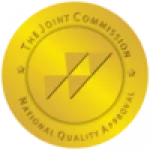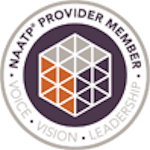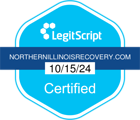Xylazine addiction is becoming a significant public health concern in Illinois, particularly in Chicago. Once limited to veterinary medicine, the use of this tranquilizer in the illicit drug market has surged, posing severe risks to individuals and communities alike. Its potent sedative effects and resistance to traditional overdose interventions make it especially dangerous, emphasizing the need for increased awareness and proactive measures to combat its misuse.
At Northern Illinois Recovery Center (NIRC), we are here to help you understand the dangers of Xylazine addiction, the risks associated with its use, and the steps you can take to seek help. With the right knowledge and support, overcoming this growing epidemic is possible.
What is Xylazine?
Xylazine is a potent sedative primarily used in veterinary medicine to calm animals during procedures or as a muscle relaxant. Classified as a non-opioid, it depresses the central nervous system, inducing deep sedation. Although effective for animal care, Xylazine is not approved for human use due to its potentially dangerous effects, such as respiratory depression and cardiovascular complications.
When combined with powerful opioids like fentanyl or heroin, the effects of Xylazine result in a concoction often called “Tranq” or “Tranq dope.” This combination is sought after for its ability to prolong the sedative effects of opioids. However, Tranq is highly dangerous. Its unpredictable potency can lead to severe health consequences, including respiratory failure, unconsciousness, and fatal overdoses. Adding to the risks, Xylazine is resistant to naloxone (Narcan), the medication typically used to reverse opioid overdoses, making interventions more complex and increasing the likelihood of fatal outcomes.
Xylazine’s Increased Use in Chicago
The rise in Xylazine use in Chicago is a growing public health concern, fueled by multiple factors. Its affordability and accessibility make it appealing to drug dealers, who frequently use Xylazine as a low-cost additive to cut opioids like fentanyl and heroin. This practice not only enhances the effects of Xylazine but also increases the potency and profitability of these drug mixtures. As a result, Xylazine-laced drugs have become more widespread on Chicago’s streets, especially in neighborhoods already grappling with high rates of opioid addiction.

According to the Chicago Department of Public Health, Xylazine’s presence in the city’s drug supply has directly contributed to the rising number of overdose deaths. In 2020, Xylazine was detected in 45 overdose fatalities statewide, a number that surged to over 200 by 2022. This alarming trend highlights the dangers of synthetic and unregulated substances flooding the drug market. With naloxone unable to reverse Xylazine’s effects, the increase in its use underscores the urgent need for awareness, prevention, and intervention to curb the devastating impact of this drug in Chicago.
Signs of a Xylazine and Opioid Overdose
Recognizing the signs of an overdose involving Xylazine and opioids is crucial for timely intervention. The symptoms often overlap with those of opioid overdoses but may include additional complications due to the effects of Xylazine.
- Extreme Drowsiness or Unresponsiveness
- Slow or Irregular Breathing
- Bluish or Grayish Skin, Lips, or Fingernails (Cyanosis)
- Low Blood Pressure and Weak Pulse
- Seizures
- Cold, Clammy Skin
- Open Wounds or Skin Ulcers
- Pinpoint Pupils
- Gurgling or Choking Sounds
- Loss of Consciousness
The Dangers of Consuming Xylazine
Using Xylazine, particularly when mixed with opioids, poses a range of severe health risks. This drug was never intended for human use, and its effects on the body can be devastating.
Xylazine slows breathing significantly, often leading to dangerously low oxygen levels in the body. This can result in hypoxia, brain damage, or death if not addressed promptly.
Its powerful sedative effects can leave users unconscious for extended periods, increasing the risk of injuries or unmonitored medical emergencies. This prolonged state also complicates timely medical intervention during an overdose.
Xylazine can cause a dangerous drop in blood pressure and irregular heart rhythms, placing immense strain on the cardiovascular system. These complications can lead to heart failure or sudden cardiac arrest.
Repeated injection of Xylazine is associated with severe skin ulcers and infections at the injection sites. If untreated, these wounds can progress to tissue necrosis and may require surgical intervention, such as amputation.
Chronic use of Xylazine can damage vital organs like the liver and kidneys, impairing their function over time. This damage can lead to long-term health issues or fatal organ failure.
While naloxone reverses opioid effects, it has no impact on Xylazine’s central nervous system depression. This makes Xylazine-laced drug overdoses harder to treat, increasing the likelihood of fatal outcomes.
Xylazine’s use of opioids significantly increases the risk of fatal overdoses due to the compounding sedative effects. The unpredictability of these combinations makes them especially lethal.
Regular use of Xylazine can lead to both physical and psychological dependency, creating a cycle of addiction. Withdrawal symptoms can be severe and require professional recovery treatment.
As an unregulated substance, Xylazine’s strength and effects vary, making it difficult for users to gauge safe doses. This unpredictability often leads to accidental overdoses and severe health complications.

The Risks of Using Xylazine With an Opioid
Mixing xylazine with opioids like fentanyl or heroin is extremely dangerous and significantly increases the risks. This combination, often referred to as polysubstance use, amplifies and prolongs the effects of opioids, making overdoses much more severe. Fentanyl is already one of the deadliest drugs in the U.S., and adding xylazine into the mix makes it even more lethal. The deep sedation caused by xylazine can delay the recognition of an overdose, making it harder to intervene in time and increasing the risk of life-threatening complications.
One of the biggest challenges with this combination is that naloxone (Narcan), a common medication used to reverse opioid overdoses, doesn’t work on xylazine. While naloxone can counteract the effects of opioids, it cannot reverse the sedation or breathing issues caused by xylazine. However, if you suspect someone is overdosing on a mix of opioids and xylazine, don’t hesitate to use naloxone. It could save their lives by addressing the opioid effects and giving medical professionals more time to manage the symptoms caused by xylazine. Responding promptly in these situations can have a significant impact.
What to Do if Someone Uses Xylazine With an Opioid
If someone you know is using Xylazine with opioids, it’s crucial to have a plan to respond effectively to emergencies. Combining these substances greatly increases the risk of life-threatening overdoses, so knowing what to do can save lives.
- Educate Yourself – Learn the signs of an overdose and how to respond. Recognizing symptoms like slow breathing, unconsciousness, or bluish skin can help you act quickly.
- Carry Naloxone – Always have naloxone (Narcan) on hand. While it won’t reverse Xylazine’s effects, it can counteract opioids like fentanyl or heroin and improve the individual’s chances of survival.
- Call Emergency Services – If you suspect an overdose, dial 911 immediately and inform responders that Xylazine may be involved. Share all relevant details about the situation to give emergency responders a clear understanding.
- Provide Basic Support – Check the person’s airway and monitor their breathing. If instructed by emergency personnel, perform CPR or other necessary first aid.
- Stay With Them – Keep the individual company until emergency personnel reach the scene.
- Encourage Treatment – After the emergency, discuss the importance of seeking professional help to address substance use and prevent future incidents.
Being prepared and responding quickly in these situations can make a life-saving difference.
Efforts to Reduce Xylazine and Opioid Use
Public health officials and community organizations are working to combat the rise of Xylazine use through prevention, education, and treatment initiatives.
Prevention and Education
- Public Awareness Campaigns: Raising awareness about the dangers of Xylazine and its presence in the drug supply is crucial for prevention.
- Harm Reduction Strategies: Programs that provide access to clean syringes, safe injection sites, and naloxone aim to reduce the harm associated with drug use.
- Drug Monitoring Systems: Enhanced drug monitoring can help identify and remove Xylazine-laced drugs from circulation.
Treatment and Support
- Detox Programs: Medical detox programs can help individuals safely withdraw from Xylazine and other substances.
- Behavioral Therapy: Counseling and therapy address the underlying causes of addiction and provide tools for recovery.
- Medication-Assisted Treatment (MAT): Combining medications with therapy can be highly effective in treating opioid dependency and co-occurring Xylazine use.
Contact NIRC for Effective Drug Addiction Treatment
If you or someone you love is struggling with Xylazine addiction, the Northern Illinois Recovery Center is here to help. Our comprehensive treatment programs are tailored to address the unique challenges of Xylazine and opioid dependency.
Take the First Step! Don’t let Xylazine addiction control your life. Contact us today!




